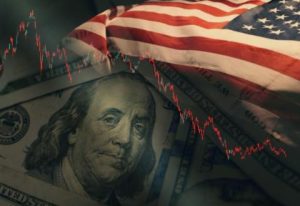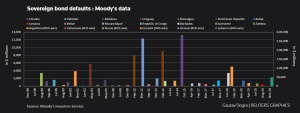People are often confused about the difference between DEFLATION and DISINFLATION. Deflation is when prices are actually falling compared to last year, i.e., you will actually pay less for enough items to reduce your cost of living. It doesn't necessarily mean that everything costs less but enough items cost less to make the inflation rate negative. Disinflation on the other hand, simply means that the rate of inflation is slowing. This could be for as little as one month, i.e., annual inflation was 4% in May 2023 and then it was 3% in June 2023. That is a big disinflation. But it was 3.2% in July 2023. So there was no monthly disinflation but there was still disinflation over two months … [Read more...]
Default by Inflation
As long as I can remember, the "boogeyman" of government debt has always been default. This is not an insignificant concern. Over the years, governments HAVE defaulted on their sovereign debt. In the 1700s, corporate debt was seen as more likely to be repaid than government debt. As recently as a year ago, Russia was facing the prospect of default on Eurobonds maturing in 2023 and 2043. According to the following chart by Reuters, 34 governments have defaulted on at least some of their sovereign debt since 1989. The largest defaults were Congo in 2012 and Ukraine in 2015, but there was also Ecuador, Nicaragua, Argentina, Venezuela, Russia, and Pakistan, along with many others. But … [Read more...]



